All too often, we hear brands claim that Facebook advertising doesn’t work for them, but do you want to know a little secret?
Every brand can sell on Facebook.
What separates those who thrive on the platform and those who can’t muster a single conversion is a sales funnel.
Remember, nobody logs onto Facebook to shop – users are here to connect with friends and blissfully scroll through memes. The low buying intent is what makes Facebook advertising so different from the likes of Google and Bing.
Jumping in gung ho with offers before the user knows anything about your brand is a recipe for disaster.
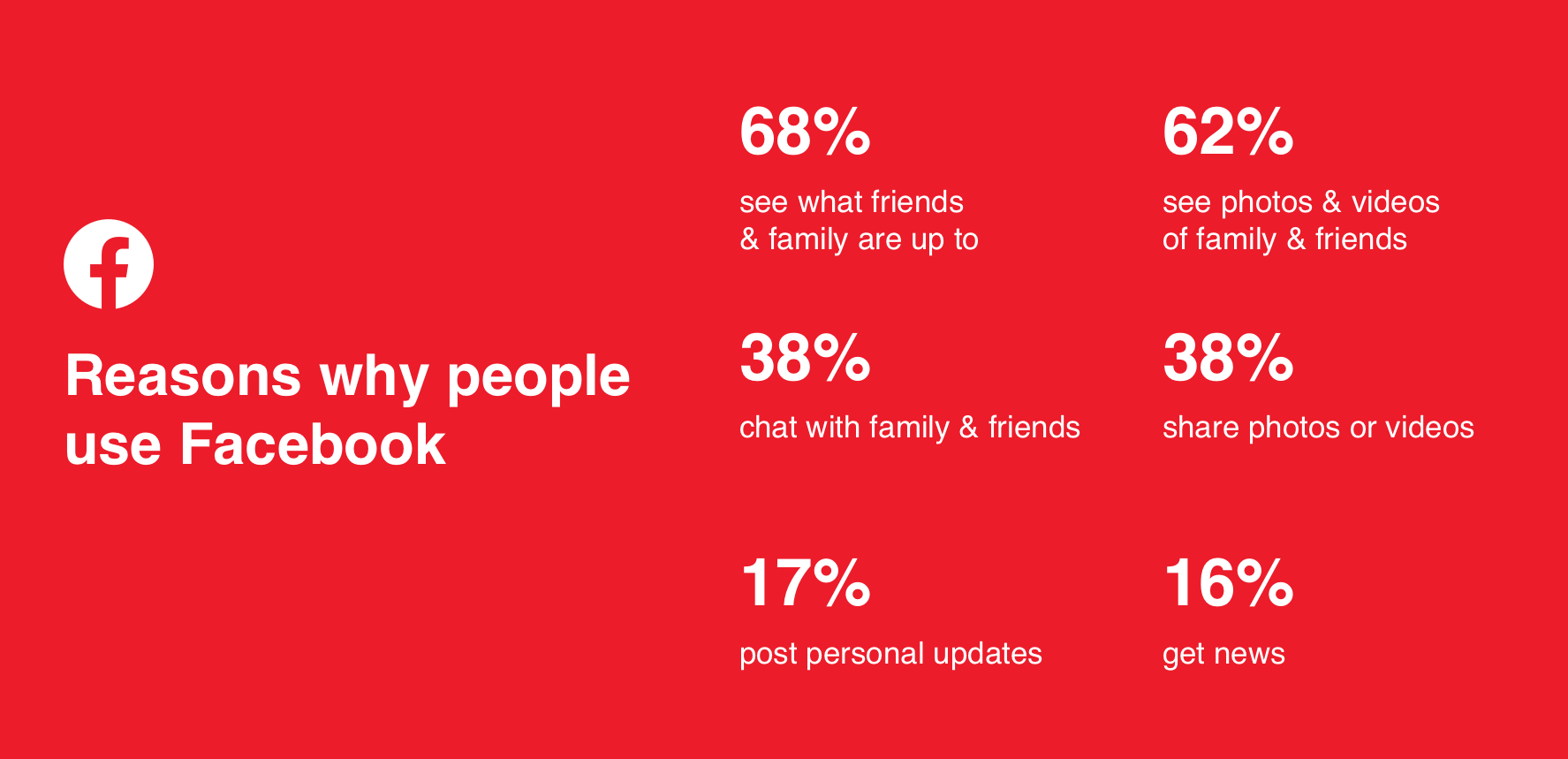
Because you are introducing your brand/product/service to a pool of completely new users, it’s unlikely that they will purchase straight away. Instead, you must capture interest and nurture them towards your goal.
What is the Facebook Ads sales funnel?
We admit it, “Facebook Ads sales funnel” does sound a little complicated, and it’s this apparent complexity that makes novice marketers take the easy route and pin their hopes on a solitary ad.
Of course, more adverts equals a higher cost, but believe us; you get out what you put in. It’s impossible to expect an audience that has never heard of their brand to convert at the first opportunity.
Facebook Ad sales funnels begin with a general audience and use retargeting to deliver campaigns to an increasingly warm pool of leads. The idea is to create targeted campaigns depending on where the individual is in the buying journey. As the person channels through, they move closer to your desired action, whether it be to enroll in a plan, purchase a product, or attend an event.
The sales funnel has three main stages:
- Awareness (Top of Funnel): At the top of the funnel, you have a general audience who don’t know anything about your brand. It is here that you introduce your brand and generate awareness. Remember, these are cold leads with minimal buying intent, so keep it light and focus on forging a relationship.
- Retargeting (Middle of Funnel): Once you have a pool of people familiar with your brand, you can now retarget those who engaged with your brand.
- Converting (Bottom of Funnel): Only after you have developed a relationship with the right audience can you proceed with converting. It is here that your leads are close to converting but need an incentive or reassurance that now is the right time.
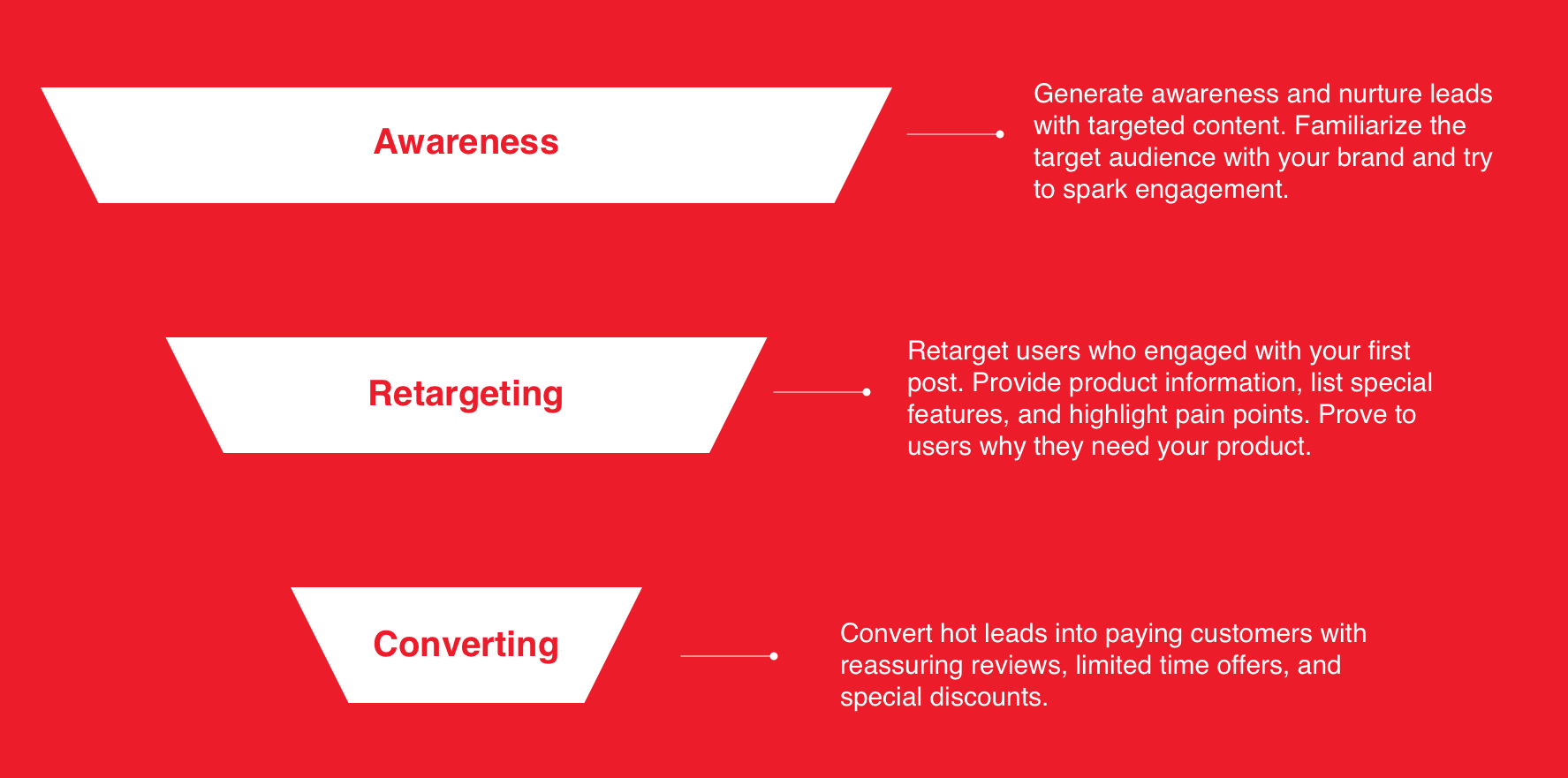
Top of the Sales Funnel – Raising Awareness
At the top of the sales funnel are individuals who don’t know anything about your product or brand and have never interacted with your content.
They can’t move through the sales funnel until they’re in it, so the first step is to create a target audience.
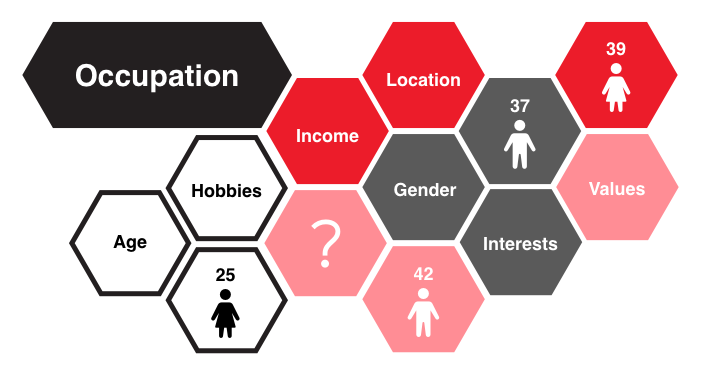
Thankfully, Facebook benefits from being exceptional at targeting. With Facebook ads, you can be as specific as you like in terms of interests, behaviours, and demographics. Perhaps you want your ad shown to females aged 20-30 who have a dog and like to run, or maybe you simply want to reach dads in New York.
Whatever your audience, once you have one finalized, it’s time to create an advert to raise awareness.
Remember, these individuals have never heard of you before, so immediately pushing them to purchase or sign up for something is a tad hasty. Instead, you need to introduce your brand subtly.
The goal here is to make your audience familiar with your brand and maybe even get them to interact or visit your website.
Middle of the Sales Funnel – Retargeting
In the middle of the sales funnel are individuals who are familiar with your brand and have interacted with your content, but haven’t yet expressed an interest in your product or taken a deep-dive in your website.
It is at this phase that Facebook Ads really comes into its own, with a feature that allows you to retarget custom audiences.
You can refine your audience by targeting the individuals who engaged with your first post. Such individuals might have clicked through to your Facebook Business page, watched at least ten seconds of your video, or liked your post.
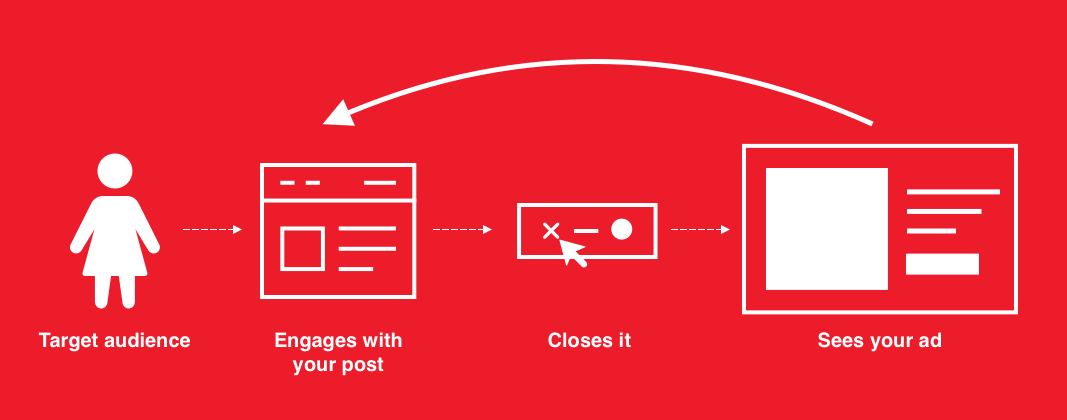
This pool of engaged individuals is now aware of your brand and has a higher buying intent, but they need to be convinced why your product is needed. It is here that you craft a post that lists your product’s special features, highlights the pain points your product solves, and answers objections they have.
The goal in this phase is to prove to users why they need your product.
Bottom of the Sales Funnel – Converting Leads to Customers
The bottom of the sales funnel is where the magic happens, and where your hard work pays dividends. Ideally, the first two steps will have set you up for an easy finish, and now is the time to convert your hot leads into paying customers.
If you have attracted the right audience and formed a strong relationship, getting individuals to convert should be relatively straightforward. Individuals who have made it this far down the sales funnel are on the edge of converting. Chances are, you just need to give them a little nudge.

This is your opportunity to retarget individuals again. But this time, you can remarket to those who visited your site and viewed products but did not complete a purchase.
Here, at the bottom of the sales funnel, customers seek reassurance from online reviews. As such, your advert should feature some social proof like success stories, stats, or testimonials.
To bolster your attack, run adverts with timed special discounts, e.g. “20% off your first order. Ends today!”. This incentivizes the purchase and creates an urgency to act immediately.
Social Media Advertising Specialists
At Rank Media, we believe that every brand can sell on Facebook. We use a carefully considered combination of organic posts and Facebook Ads to lead potential customers through the sales funnel.
All of our work begins with a well thought out strategy, from which we develop campaigns that speak to your audience at a lower cost per conversion.
In the past month, our social media gurus have led home automation, female apparel, and outdoor accessories companies to a 236%, 1366%, and 1799% return in ad spend respectively.
Get in touch to find out how we can improve your conversions and boost your company’s sales! Call us today on 1-800-915-7990.
Instead of setting out to write yet another 2,000-word blog post, when was the last time you retouched and updated older content from years gone by?
Many companies religiously pump out reams of new content to improve SEO, and who could blame them? Writing fresh content is what most marketing beginners are taught as a sure-fire way to SEO success.
But, while their intentions are in the right place, new content isn’t always the solution.
If you continue to force out content, you’ll have too many blog posts targeting the same topic – and chances are, they’ll compete with each other on SERPs, which is a recipe for disaster.
So, instead of writing 20 different pages that focus on the same search terms, it’s better to have a handful of all-encompassing posts that provide mega value to the reader.
What Does “Content Revamping” Mean?
An excellent blog post that you wrote back in 2014 might have driven plenty of organic traffic at the time. But as the years go by, the competition will target the same fruitful keywords and write similar content.
Before you know it, your article is overtaken by up-to-date content filled with infographics and video. Frustrating, right?
Well, just like other areas of your business, your content has a lifecycle. After all, 4.4 million blog posts are published every day. It’s only a matter of time before a competitor competes with your high-ranking post.
When your old content starts its decline, the answer isn’t to write an entirely new article. Instead, why not revamp and modernize the post you’ve already written? Not only can this be equally as effective, but it will also take you half the time!
Content revamping is all about working smart. And no, it’s not just adding more words.
You can introduce new keywords, edit the meta description, change headings, and add new images and infographics. Once the post has been fully revamped, update the publish date, and fetch the URL so that the search bots will treat the post as fresh new content.
When should we do it?
1) When the current content does not rank on SERP
When your existing content isn’t ranking on SERPs – at least on the first page – it’s clear that something needs to be done. There’s no chance you’ll be capturing optimal traffic if your blog post is found in the depths of page two or further down.
A tweak to the content and keywords can be all that’s needed to prop your page up the listings.
2) When the content does not provide value
Using Google Analytics, you can explore all the stats that matter. The data on Google Analytics will give you a clear picture of how your old content performs and whether a revamp is necessary.
Like we mentioned before, your content has a lifecycle. With Google Analytics, you can see exactly where your content is in the cycle. If you can see the click-through rate is decreasing, the bounce rate rising, or the number of conversions lowering, it’s time for a revamp.
If you do nothing, the post will continue to freefall and not generate any value to your website.
3) When you are pursuing a different goal
A content revamp can also be in order when you want to pursue a different goal and target a different audience. If this is the reasoning, a lot more strategy is required.
Depending on the goal you want to achieve (more traffic, more subscribers, more conversions, etc.), you will need to revamp your content in a certain way. This could include packaging an article as an ebook that captures the email address of visitors.
How to Improve SEO by Revamping Content
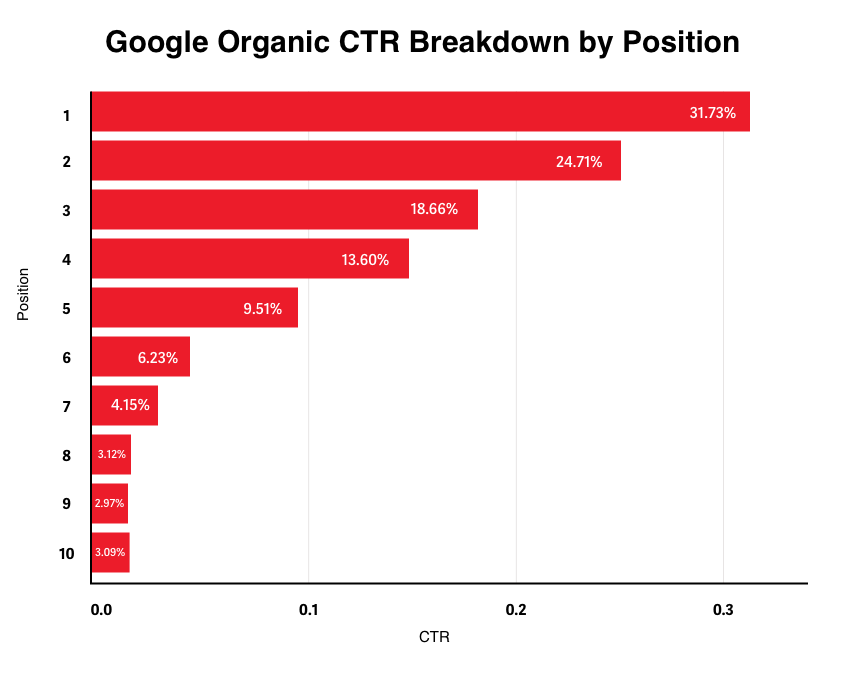
Step 1: Identify content that does not have optimum sessions
Not every existing blog post is worthy of an overhaul. You want to focus your attention on pages that aren’t reaching their full potential. Perhaps a page is teetering on the edge of Google’s first page and needs a bump to the high volume visitor rankings.
On Google Analytics or Google Search Console, you can see which pages convert well and bring in the most traffic. At first, focus your revamping efforts on pages found on the second or third page of Google or those that have seen a decrease in clicks in the past six months.
Moving up just one spot in search results will increase the click-through rate by 30.8%!
Step 2: Revamp your content by adding keywords that will win
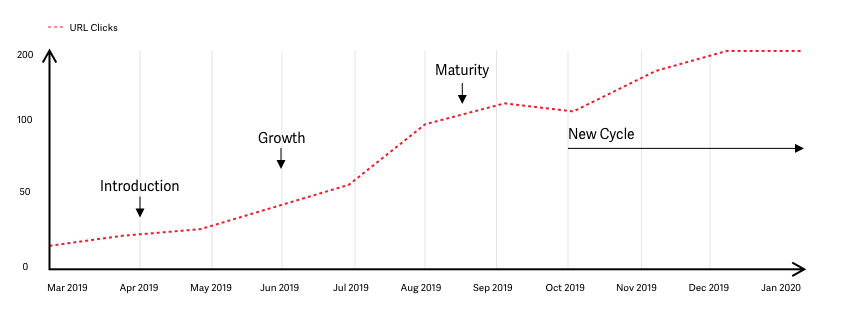
As time goes by, your focus keywords change. You might think that the keywords your content is already targeting are enough, but fresh keyword research can give your content an extra push.
Using SEMrush, you can see which keywords your content already ranks for and pick out the valuable ones with high search volume.
Maybe your page is in the 15th position for a search term that has thousands of monthly searches. It’d be well worth getting onto the first page for this keyword, don’t you think?
Once you’ve identified relevant target keywords, add them in — but don’t stuff the page. Only use additional keywords where it makes sense. Don’t forget to hyperlink these keywords to other relevant blog posts you’ve written, and incorporate them into headings and subheadings.
If you want to go the extra mile, it’s worth looking into long-tail keywords. Long-tail keywords are great for finding content ideas for new sections of text. The average Google first page result contains 1,890 words, so beefing your content up with some new content sections might be needed.
Step 3: Improve on-page SEO
Fix broken links: Internal and external links that direct to 404s can severely impact your content’s ability to rank. Scan for broken links and then replace them.
Did you know that over 70% of people who reach a 404 page will immediately exit and not return?
New external linking: Depending on how old your content is, there may be updated research or fresh resources for you to link to. Google gives you a big thumbs up when you link to useful websites.
Optimize images and video: Assign alt-tags to all of your images and resize them to below 100kbs. Large media files can slow down page load speeds, which is a big no-no from Google and will harm your bounce rate.
Add new types of content: When visitors enter your page, are they greeted with uninviting blocks of text? Adding images, gifs, and videos can make the content more digestible and give you extra points from Google. Content filled with different media usually gets more links and shares, which can further improve your rankings.
Canva is a useful tool for creating engaging infographics and visuals in minutes.
Add Keywords: Naturally, add your primary keyword throughout the body of the text, but do not overstuff! Keyword stuffing raises a red flag, and you’ll be penalized accordingly by Google. The primary keyword should be in the title, meta description, URL, H1, and first paragraph for the best chance at ranking.
For secondary target keywords, you want to include these in your H2s and H3s and mention them at least once in the subsequent paragraphs.
Step 4: Improve CTRs
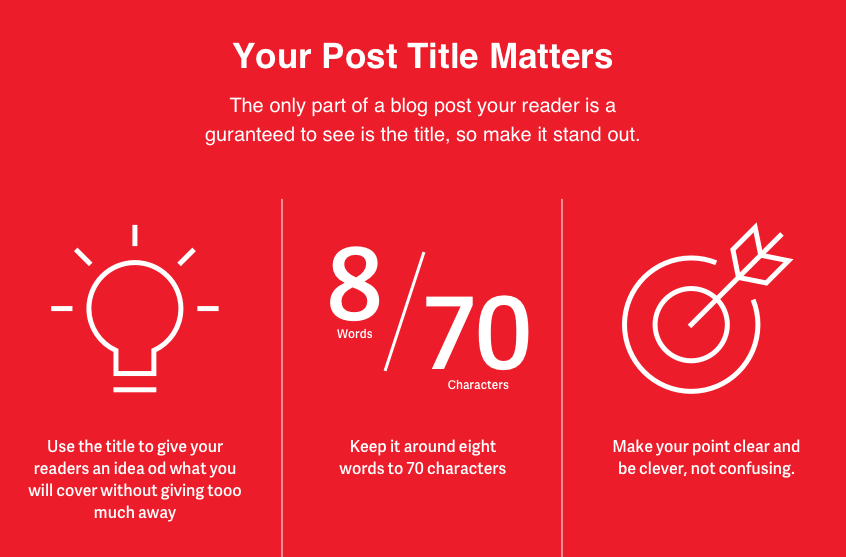
If your page is sitting pretty in a healthy SERP position but isn’t getting the traffic it deserves, maybe your title and meta description need strengthening. Review your title and meta description and compare them with your competition.
A title that sparks curiosity and an informative meta description that gives the searcher the information they need is enough to get a click-through. There are clever tricks to make your title more appealing. Use the Headline Analyzer tool to see if your title ticks the right boxes.
Tips:
Pages with a meta description get 5.8% more clicks.
Titles containing a question have a 14.1% higher CTR.
Titles with between 15 to 40 characters have the highest CTR.
Step 5: Enrich Your Content by adding E-A-T element
E‑A-T stands for expertise, authoritativeness, and trustworthiness, and is a direct ranking factor.
E-A-T isn’t essential to every industry, but if your business could impact the visitor’s health, financial stability, or safety, it is a factor you should be aware of. Example businesses include those in the medical, finance, nutrition, and news industries.
To improve and better demonstrate your E-A-T, make your content shareable so that you receive backlinks from authoritative websites, keep the content up-to-date and factually correct, and add a FAQ section.
Step 6: Submit the page for a recrawl
Once you’ve revamped your old content, you needn’t sit back and wait for Google to return to your site and recrawl it. Go to Google Search Console and resubmit the content for immediate crawling!
The time frame can range from website to website, but in specific scenarios, Google’s bots will crawl the page the very same day! In a matter of days or hours, your content will be reindexed, and you’ll be able to see the rewards of your content revamping!
Need help creating or optimizing pages for the terms that matter most to you? Give us a call at 1-800-915-7990 to speak with one of our SEO experts and learn how to get more traffic.
When the time comes to set up your first Google Ads account and launch a campaign, there’s plenty to get your head around, especially newcomers.
After spending time getting to grips with the puzzling platform, you might think you’ve got everything in order.
Keywords? Check!
Budget? Check!
Ad copy? Check!
But, there’s one final hurdle to contend with: match types.
Most entry-level marketers skip this step, opting for Google’s default match types, which is so often the downfall to ad campaigns.
This article is an important guide to using match types to make your budget go further and generate some extremely valuable clicks. It can seem a little confusing at first, but believe us; it’s worth learning.
What are Keyword Match Types?
Simply put, the match type determines whether a broad audience will see your ad or if it will only be shown to a select few. Your choice of match type tells Google how closely you want to match an advertisement with a keyword.
For example, if your keyword is “Women’s Top,” do you want Google to show your ad solely for “Women’s Top,” or would you prefer your ad also show for similar terms, such as “Women’s Blouse,” “Women’s Shirt,” and “Ladies Top”?
The broader the keyword match, the more people your advert will reach. Conversely, a narrow keyword match has the potential to capture more targeted searchers.
Google Ads offer 4 keyword match types: broad match, modified broad match, phrase match, and exact match. If you don’t know when to use which one, you could be wasting your budget and missing out on clicks.
So what are the differences between each match type, and how should you use them?
Broad Match

Broad Match is Google’s default setting, and, as such, is the most widely used match type by entry-level Google Ads users.
But just because it’s the default setting, it doesn’t mean it’s always the right choice. Consistently using the default setting can be problematic once you understand how this match type works.
Broad match casts a wide net and reaches the largest audience – showing your ad to people who search for all kinds of variations of your keyword, as well as your specific keyword.
For example, if your keyword is “basketball shoes,” Broad Match may target relevant phrases, such as “men’s basketball shoes,” “basketball trainers,” “basketball equipment,” and “cheap basketball shoes.”
Indeed, Broad Match puts your ad in front of more eyes, but a lot of these impressions are from irrelevant traffic, which can negatively impact click-through rate (CTR) and cost a small fortune.
Amongst the useful search queries Google suggests, there will almost certainly be a handful of suggestions that are not relevant. For the same keyword as above, Google might suggest “designer basketball shoes,” “tennis shoes,” and “sports trainers.”
You can restrict that reach of Broad Match by setting negative keywords that tell Google what queries you don’t want your ads to show for.
Modified Broad Match

Modified Broad Match is the middle-ground between Broad Match and the more targeted match types to come.
This match type lets you be more selective in the queries that will trigger your ad by assigning a ‘+’ to specific words in your keyword phrase. When you add ‘+’ to a specific word, Google will only show ads for searches containing that word.
This allows you to reach a similarly wide audience as a Broad match, but better control the targeted words.
For example, if you use a Broad Match Modifier on the keyword “+bike +shop,” Google can show your ad when a user searches for “bike repair shop,” “bike shop,” or “online bike shop,” but will not display your ad for “cycling shop,” “bike store,” or “bicycle repair store.”
Phrase Match

Phrase Match introduces a higher level of control for your ad campaigns – eliminating the unnecessary traffic that Broad Match provides.
With Phrase Match, ads only appear for searches using your keyword in the exact order you entered and close variants.
The critical thing to remember with this match type is that it must be in the exact order. No words are allowed within the keyword, but some additional terms might be added at the beginning or end of the query.
For example, if your keyword is “dog treats,” your ads are eligible to show for other terms such as “healthy dog treats” or “chewy dog treats,” but not “treats for dogs” or “dog chew treats.”
Exact Match
As the name suggests, Exact Match is the most targeted keyword match type. Previously, users would only see your ad if they searched your exact keyword phrase, synonyms, and no juggling of words.
However, Exact Match now includes misspellings, reordered phrases, and when function words are removed, added, or changed. For example, if your keyword phrase is “Montreal hotel,” Exact Match will also include other phrases such as “hotel in Montreal,” “Montreal hotel,” and “Montreal hotels.”
This keyword match type is useful when you’ve identified a keyword that drives conversions. You might not receive as many impressions as Broad Match, but you’ll probably see a higher CTR.
Which Match Type is Best for your Campaign?
Match type is the tool that controls exactly which search queries you’re bidding on, so, of course, they have a significant impact on your ad performance.
It takes time to identify the match type that works best for your campaign; every business is different, and there is no “one size fits all.”
That being said, testing can universally uncover the match types that work for you and which ones don’t.
By running Broad Match, Phrase Match, and Exact Match simultaneously, you can compare the data to see which has the highest CTR and lowest cost-per-click.
Alternatively, you can launch a Broad Match campaign to identify profitable queries and eliminate budget-draining keywords. You can then use this data to setup Exact Match campaigns that isolate the profitable queries into their own ad groups.
We never recommend running pure broad match keywords generally, but there are some exceptions. We like to segment our search campaigns by match type, broad match modified, and exact match. This way, we can discover new keywords with the broad match modified campaigns and then add it to the exact match campaign.
A common mistake we see when people segment their campaigns by match type is that they forget to negative out the exact match keywords from the BMM campaigns. This prevents overlap between the campaigns, which can skew your data.
Google Ad Experts
Starting a PPC campaign is easy, but making it work is the tricky part. That’s where the experts at Rank Media come in. Improving results, driving down costs, and squeezing clicks and profit out of your PPC campaign is what we do best.
When you work alongside Rank Media, you have access to a highly experienced and knowledgeable team. Get in touch to find out how we can help your business today.
Once you know the keywords and phrases your target market is searching for, you can begin optimizing your on-page SEO. That means it’s time to start crafting new pages and editing existing pages to match your audience.
It might sound easy, but there’s a skill to it.
It’s all about creating content that appeals to Google as well as your target audience.
Writing to connect with your audience will be something you’re familiar with, but writing to impress Google – how exactly do you do that?
Well, the truth is, what Google likes to see is staring right in front of you.
There’s no secret recipe; all the ingredients are already there, you just have to look.
How to Write For Google
Google ranks pages based on hundreds of factors. The pages found on the first page are there because the search engine has determined them to be the best answer to the searcher’s query.
And, most of the time, Google gets it right.
Think about it: how often do you find yourself scouring for the information you need on Google’s page 5?
To emerge at the top of the pile, you need to provide valuable content better than any other page currently found for your target search term. Providing authentic content that your readership loves simply isn’t enough anymore. Google has to love it, too!
To understand what Google likes, and what you need to do to rank for a search term, follow this simple formula:
- Search the keyword you want your page to rank for
- Click onto the top-performing pages
- Examine the qualities the pages possess
- Improve upon the content they created
Evaluate High-Performing Pages
The quickest way to see what you need to do to rank for a specific keyword is to look at what the competition is doing.
Let’s say you want to rank for “yoga classes in New York”. Simply search the term and look through the top 1-3 organic listings.
As you read and scroll through their pages, ask yourself:
How much content do they have?
How do they display their content (do they use images and videos)?
What do their header tags look like?
How many backlinks do they have?
How many internal links are pointing to this page?
How powerful is the domain?
How fast is the page?
Knowing the answers to these questions means you’ll understand exactly what’s needed to elevate your page above the competition.
Improving Existing Content
Google already gives you the blueprint; you just have to execute it better than anyone you’re chasing. If you create a page with more content, more visuals, and more links than the other pages, you’ll be rewarded!
It can be hard work competing with the top ranking websites for any search term, but properly evaluating what they do well and how you can improve them will pay dividends in the end.
Need help creating high-ranking pages for the terms that matter most to you? Give us a call at 1-800-915-7990 to speak with one of our SEO experts and learn how to get more traffic.
There’s nothing more fascinating than working on campaigns for the insurance space, particularly when it comes to health insurance and Medicare. While it does seem rather odd to advertise health insurance as a commodity from the perspective of a citizen from the land of hockey pucks and maple syrup fiestas, the market in the United States provides ample opportunities for insurance agencies big and small.
Whether you’re running a large call center or operate as an independent agent, the opportunities to generate traffic and convert leads is immense regardless of economic conditions.
Ensure Your Site’s Potential with SEO
After navigating my way through the insurance space for over six years, I’ve been witness to some of the biggest sites in the industry rise and fall when it comes to generating organic traffic. Without naming names (because that would just be rude), I’ve seen premium exact match domains go from king of the mountain to the court’s jester, all at the mercy of Google & it’s ever-changing algorithm standards. Phooey.
Generating a significant amount of organic traffic from search engines entails a strategic plan of action depending on your geographic footprint. For insurance agents and companies that operate in a local environment, mastering local listings is one piece of the pie.
For example, we helped an auto insurance agency in North Carolina increase organic traffic by optimizing all local listings on major platforms (such as Google, Yelp, and Facebook) and creating region-specific landing pages on their main website. It’s critical to refrain from duplicating content across your website to avoid any potential doorway pages penalties from Google. If you create bland, unoriginal content for every single possible exact match of a keyword, you’re liable to get wrecked by the search engine giant.
It isn’t 2006 anymore, buddy.
National websites with insurance products for multiple states face enormous challenges, especially without any physical locations for regular consumers to book appointments. Insurance agencies and brokers typically operate from call centers, fielding thousands of calls each day to convert inbound requests into paying customers.
Websites targeting a myriad of states will need to invest far more resources into search engine optimization than single-area businesses due to immense competition with national carriers, brokers, and independent agencies. The lead generation game has exploded in this sector, as has the number of websites indexed for various insurance products.
As a result, SEO & content marketing strategies must be multi-faceted and appeal to broad audiences and structure content according to where users fall in the sales funnel.
Sales Funnel? Content? What’chu Talkin’ Bout Willis?
Aligning your strategy with the TOFU-MOFU-BOFU inverse pyramid can be immensely fruitful (don’t worry tofu haters, we’re not talking about food in this case).
TOFU: at the top of the content marketing cycle, we have the awareness stage, where the most general pieces of content will generate the most impressions. Think of the articles you’re creating at this stage as a metaphorical fishing line used to catch as many interested fish as possible with tempting bait. It’s at this stage in the content lifecycle where your blog will be your best vehicle, touching on wide-ranging topics that can appeal to large segments of your niche audiences.
For example, an insurance company specializing in selling Medicare Advantage & Supplement plans may find value in developing a series of resources to assist users that are turning 65 years old. Transitioning to the retired life is a significant life event for seniors, especially when it involves Medicare enrollment.
MOFU: this is the consideration stage, where specific resources regarding comparing insurance quotes and plan details can be beneficial. In this stage, users are actively analyzing information from different insurance companies. The MOFU stage is where you can convert prospects with well-written content matching their specific searches. While your blog may serve as an entry point for users, optimizing content within your website on targeted product/service pages may assist in qualifying warm traffic into potential viable leads.
Continuing with the Medicare example, this may be the prime opportunity to develop videos, eBooks, and other pieces of content regarding the differences between Medicare Advantage and Medicare Supplement plans. These educational resources provide added value to your organization & can be optimized on a myriad of platforms, generating an abundance of organic traffic.
BOFU: at the bottom of the sales funnel, we have users entering the decision stage, where your content needs to be actionable to convert leads into customers. At this point in the content lifecycle, prospects are ready to open their wallets and give someone their money quicker than Fry would for a cup of coffee (Futurama reference ftw). At this stage of the funnel, your content sells the reason why your agency is the one to work with for such a critical decision.
Publishing articles around specific plan information will resonate well with people looking to purchase particular plans or enroll in coverage immediately. In the insurance realm, offering case studies, testimonials, and even webinars can help convert traffic into customers.
Pay a Premium for Qualified Traffic
While the benefits of SEO won’t be apparent in the short-term, the long-term rewards are substantial and can carry your business to the next level. However, SEO results in 12-16 months won’t help you subsidize overhead costs, salaries, and the frequent happy hour sessions where the typically tepid HR manager goes wild. If you require immediate traffic to get your phone ringing and salespeople singing, media buying campaigns can be set up on a whim and generate traffic instantly.
Depending on where you dedicate your advertising budgets, different platforms offer various advantages to target users depending on where they sit in the customer lifecycle.
Search advertising, whether it’s on Google or Microsoft (formerly Bing Ads – and yes, people still use Bing), provides the most direct opportunity to target users looking for insurance information. Don’t go berserk when targeting keywords as you can swiftly exhaust your budget on unqualified traffic.
While it may seem appealing to chase the white whale of keywords like health insurance, auto insurance, and life insurance, don’t fall victim to your hubris, as Captain Ahab did in Moby Dick. Rather than investing your mortgage payments on broad keywords, whittle down your keyword selection to more targeted phrases that indicate purchasing intent, which includes the following prefixes: “buy,” “compare,” “enroll,” “affordable,” and more.
By targeting long-tail keywords and intent-driven phrases, you’ll be able to control your budget more efficiently and generate a smorgasbord of leads. A broader approach will suffice in some situations. Still, the same competitors snagging up traffic for the most popular terms tend to have budgets far exceeding seven figures, meaning you will fall short in the end unless you have the financial backing of Mr. Bezos.
Complement your search advertising campaigns by allocating funds to social media and native advertising platforms. Identifying niche audience may seem rather exhausting, but Facebook’s advertising platform allows you to pinpoint fruitful audiences with a little bit of research and strategic thinking.
In addition to crafting ideal audiences based on demographics, behaviours, and interests, you can layer in lookalike targeting of leads and customers, refining social media algorithms to ensure that prospects resembling your customer get increased exposure to your brand. Yes, Facebook’s nefarious spying methods can help improve the efficacy of your paid media campaigns.
Thank you, Zuckerberg.
Facebook’s reach is unprecedented at the moment, and having the ability to fine-tune your creatives for Messenger, Instagram, and Facebook’s audience network is exceptionally appealing. Lastly, native advertising networks such as Taboola and Outbrain provide alternative methods of targeting users based on the content they view online, where you can layer targeting options with behavioural data sets offered by third-party exchanges.
Insurance brokers that want to target HR managers and operations executives for group plans may find LinkedIn a more suitable environment for their advertising efforts. Despite the heftier price tag on LinkedIn, the higher CPCs are offset by the most advanced job title/function targeting, allowing you to reach decision-makers effectively.
Performance Marketing: A Suitable Co-Pay for Insurance Leads
Establishing a footprint and outspending the competition may be exhausting and disconcerting, especially if your conversion funnel fully optimized. If your budgets are restricted, or you don’t have adequate marketing personnel in-house, you can leverage the expertise of others in the industry and piggyback on their campaigns to fuel your sales performance. Behind the myriad of websites and insurance quoting engine sits a private network of stealthy publishers ready to monetize web traffic in any shape possible.
There are two main types of lead generation campaigns: pay-per-call solutions and data lead campaigns. In addition to inbound calls and data leads, various insurance marketing exchanges offer pay-per-click campaigns, allowing your team to capture traffic from quote results pages and other forms of marketing.
When it comes to inbound transfers (phone calls), various marketplaces and vendors provide solutions based on billable timers. Current marketplaces have publishers selling phone calls that last a minimum of 90 seconds, meaning you only pay for calls that exceed the minute and a half threshold. Time duration can range from as low as 30 seconds to as long as four minutes in some marketplaces, with a sliding scale of pricing, the longer a call lasts.
Pay-per-call campaigns provide great flexibility for businesses that want to spend their media budgets efficiently and ensure their agents are busy at max capacity.
On the other side of the spectrum, data lead campaigns sell intent-driven form submissions to the highest bidder. Various companies in the insurance marketplace have fine-tuned their SEO campaigns and media buying knowledge to develop full-fledged insurance funnels. In some cases, web lead campaigns allow data to be sold on a shared basis, meaning the same user’s quote request is given to multiple insurance companies.
Before venturing into the performance game, it’s essential to have the correct infrastructure set up to be able to monitor traffic, analyze campaigns, and report on performance. Additionally, while specific marketplaces provide the gold standard for web traffic, there will be fraudsters and bad apples in various exchanges supplying ridiculously inadequate leads, resulting in a significant waste of labour on your end and nothing but frustration.
It’s essential to carry out small tests with different publishers until you find the best performing sources; otherwise, you’ll waste a significant amount of money on burning your phone lines.
Claim Victories with Email Marketing & SMS
Regardless of how you generate leads, strategic email marketing may assist in recouping the costs of various advertising initiatives. I tend to sound like a broken record when recommending automated remarketing strategies for multiple niches. Still, time and time again, email and SMS marketing has always proven to be a winning campaign regardless of the industry.
Re-engaging viable leads and existing customers via email marketing is of the utmost importance in the current digital age. Pandemic or not, people around the world are glued to technology and consistently bombarded by special offers, random promotions, and an endless amount of spam from Nigerian royalty.
Retaining top of mind awareness with your prospects and customers can be achieved by deploying automated communication sequences via email marketing and SMS platforms.
Additionally, all inbound marketing initiatives will end up pushing users into various baskets, allowing you to remarket to leads from multiple channels effectively. For example, top of funnel marketing campaigns via Facebook Ads may receive the same messaging as users that signed up to your blog’s newsletter. Users that request an insurance quote from affiliate traffic can go into the same email remarketing basket as users that filled out a quote request form on your landing page from Google Ads campaigns.
As with your content marketing initiatives, it’s essential to segment your remarketing campaigns based on where users are in the customer lifecycle to maximize conversion rates. Setting up email and SMS automation workflows in platforms like Klaviyo work best, allowing you to spend time on the initial setup and then tinker with established paths to optimize performance.
Author’s note: this is not blatant publicity for Klaviyo, but out of all the platforms that I have tested (and there have been too many), Klaviyo’s integration is simple and allows you to execute both email and SMS campaigns concurrently.
Split-testing is a critical component to achieving great success on the email marketing front (please tell me you read that in Borat’s voice). Continuously split-testing subject lines and email copy allows you to understand which type of messaging converts best.
In some cases, inserting a merge tag (such as the user’s first name) into the subject line may increase the open rate of your campaigns, ensuring you maximize visibility for the copy your content team painstakingly wrote for hundreds of hours. Just don’t use any potential heart-attack-inducing subject lines. Otherwise, you’ll subject yourself to a significant amount of scrutiny and highly entertaining negativity.
Ok Yoda, What About Social Media Posts? Contests? Outreach? Shouting from Rooftops?
Insurance companies with unlimited budgets can transcend digital and venture into billboard advertising, extensive out-of-home media promotion, television ad campaigns, and more. However, reigning your focus on SEO, media buying, lead generation, and tactical remarketing should be the focus of your advertising budget to get the ground rolling. Should you develop a successful inbound marketing campaign, opportunities can arise with traditional media, especially when it comes to targeted tv and radio spots by purchasing remnant traffic. Also, investing in developing a presence organically on social media channels is highly encouraged.
Tread carefully when it comes to developing a voice on social media platforms, as insurance is a tricky discussion point for many. Loyalty to insurance companies is tenuous at best, considering many consumers seek out any opportunity to haggle over premiums and get the best rates. Ensure that your content educates and entertains while simultaneously communicating the benefits your company provides compared to the other fish in the sea.
A conversational tone might work best in entrenching brand loyalty among your customer base, particularly on Twitter, where brands interact with each other in a light-hearted manner. Just don’t make it too forced, or else you’ll be “OK boomer’ ed” by your audience and ignored.
In the end, there’s a multitude of tactics that can be employed to capture pertinent prospects. Fine-tuning campaigns to your business will require extensive testing and data collection, but in the end, someone is always going to need insurance…so get those fishing lines ready.
There is no questioning the severity of the current pandemic and Covid-19 will undoubtedly test us all. But, as is the same in any crisis, businesses who bury their head in the sand will inevitably come unstuck, while those who seek opportunities and innovate will make it out unscathed.
It might feel like the control you have is evaporating by the hour, but making the effort to prepare your business for a successful return is the best way you can take back control. In a period where many are standing still, it’s time for your business to up the ante, build your brand, and think long-term.
Despite the stream of new restrictions being put in place to ensure community safety, the good news is that there’s still a lot you can do.
In this post, we’re specifically looking at the fruitful options Amazon provides.
With the world self-isolating and brick and mortar shops closing, online shopping is soaring.
In between watching The Office for the 32nd time and baking another batch of cookies, most are filling their free time with retail therapy. And as the internet’s largest marketplace, Amazon alone has seen a mass increase in traffic and conversions.
Such is the surge, Amazon has added 100,000 new distribution workers across their United States fulfilment centres! For product-based businesses, it’s clear to see the much-welcomed revenue source Amazon can provide through these trying times.
Improvements to Make to Your Amazon Listings
Rank Media is an expert and leader in Amazon marketing and product optimization. We’ve been working closely with Amazon clients for over a decade and pride ourselves on the range of businesses we’ve helped.
Whether you’ve never even used Amazon, or are looking to bolster your Amazon sales in the face of coronavirus, our experts have put together some simple improvements you can make to your Amazon listings:
Optimize Listings
Make sure your product listings are well optimized. This involves writing unique descriptions, optimized titles, engaging content that ticks the box with Amazon’s ranking algorithm, high-quality imaging, and placing products in relevant categories.
Deploy A+ Content
Amazon A+ Content allows sellers to describe product features in an advanced way with detailed descriptions, videos, high-quality images, charts, and custom copy. Did you know having A+ Content can increase conversions from an average of 3% to 10%?
To enable this additional visual content on your product pages, you need to be registered with and approved by Amazon’s Brand Registry. We recommend you do this ASAP to plump up your product listings!
Review Generation
Even if they’re not buying, a great way for consumers to support their favourite businesses through these times is to leave a review. Reach out. You might be surprised to see just how many people help you with a positive review. After all, they’ve got the spare time to do it!
Remember, more than 90% of shoppers say reviews impact their buying decision. So act now! Having some extra 5-star reviews on your product could be the difference between you getting a few extra conversions and not.
Technical, Advanced Amazon Marketing Support
Rank Media’s Amazon team is able to support you with more technical Amazon marketing such as Amazon PPC, Amazon SEO, and product optimization. We’re here to ensure your Amazon marketing efforts are in order so that you’re in the best position to hit the ground running through this unprecedented time.
Take care of yourself, take care of your brand, and you will get through this.
If you are interested in bumping up your business’ Amazon performance now and beyond, get in touch with Rank Media via our contact form and we’ll match your needs with the right service.
A sweeping, global pandemic with major socio-economic ramifications is causing countless businesses to rewrite growth strategies, modify marketing messaging, reduce spending, reconsider go-to-market campaigns, and resort to significant salary cuts – at least temporarily.
Now, for the good news: There is still a demand for specialist talent from those that need it and, for a company’s marketing gurus, COVID-19 is still business as usual.
Indeed, while some businesses might freeze variables like marketing budgets as a reactive strategy in the short term, the fact of the matter is that what your business does next is what matters most. After all, you set the tone for how customers perceive your brand during this crisis of unprecedented scope.
As such, even though much is changing on a day-to-day basis, it is absolutely vital that your business adapts its marketing strategies during this difficult time. Fortunately, we’ve got you covered with a practical guide to adapting your company’s marketing strategies during the COVID-19 pandemic.
Tap into the Digital World
If you haven’t already, it’s time to shift your company’s focus online, as most consumers will be glued to their phones and their screens for the foreseeable future. Rather than market your company’s services in abandoned public places, tap into the digital world to deliver compelling content. During these trying times, brands can provide content that is light-hearted, uplifting, informative and, above all, highly welcome to people who are in dire need of some encouragement.
With the increase of remote working, the time is apt for marketers to turn to digital channels and embrace the online transformation. Use this time wisely; research where your clients can be found online, and come up with different approaches to enhance your company’s success. After all, in the coming months, it is almost inevitable that businesses will become more reliant on their digital strategy than ever.
Adapt to Thrive
As any marketing expert knows, adaptability is a key factor in resilience. In addition to listening for key changes in customer sentiment and optimizing the marketing budget, companies must adjust their creative strategies in response to the global pandemic. For SEO experts, that means considering how popular keywords (and their intent) have changed since the outbreak, as well as paying close attention to Google Trends. Finally, be sure to adjust your marketing strategy according to territories, as the virus is at different stages in different locations.
Apply Caution
This tip goes without saying: during this global outbreak, remember to be cautious of consumer sensitivities. Consumers are hyper-anxious at the moment, and even simple gestures or playful humor can spur backlash and boycotts. To avoid any unintentional slip-ups, we recommend keeping your marketing content light and informative.
Maintain Trust
With the rise of the COVID-19 pandemic, it’s no surprise that priorities have changed for your customers. As such, their trust is more valuable than ever. But how can you build and maintain that trust in the midst of chaos? The answer is simple; listen to what they have to say.
Social listening is brilliant under the best of circumstances and, these days, the marketing tool is useful for learning how customers feel, and why they feel that way. Monitor client emails and phone calls, and ask sales teams about the feedback they receive. At the same time, marketers have a responsibility to stay honest about what a company can and cannot deliver at this time, even if that means sacrificing some customer relationships. However, setting realistic expectations about service levels will only benefit your company in the long run.
Prepare, Prepare, Prepare
Being prepared for a successful return to normalcy is the best way to assert control over the current situation. Think long-term, and use this time to prepare for future marketing campaigns that can be launched when things go back to normal. While companies are scrambling for short-term solutions, taking the time to enhance certain aspects of your business and preparing for the future will significantly benefit you in the long run!
By following these helpful tips, your marketing strategies will be in a much more dominant position when the COVID-19 craze passes. And, if your company is strategic with its marketing plan, there’s no reason why these tips can’t help you achieve long-term value when life gets back to normal.
If you’re interested in bumping up your business’ marketing performance now and beyond, get in touch with Rank Media! Our marketing experts can help your company weather the storm so that you come out even stronger on the other side.
Establishing your presence online can be immensely challenging, especially if you’re in a competitive industry like real estate. In Montreal, for example, the amount of real estate listing aggregators online makes it somewhat challenging to keep your properties at the forefront, especially if you’re trying to sell residential units in dense markets. Once you start breaking down the number of upcoming developments by neighbourhood, the amount of competition is just outright staggering. Fortunately, some excellent digital marketing tactics can complement real estate advertising and bring a wealth of traffic to your doorstep and generate fresh leads hand over fist at a reasonable cost. Sounds fantastic, right?
1) Dabble in the art of SEO
When it comes to search engine optimization and real estate, the jokes and sayings write themselves.
- “Invest in building real estate on Google.”
- “Beat the competition and secure your home on the first page.”
- “Don’t mortgage your future on TV ads – close the deal with SEO instead.”
With Black Friday & Cyber Monday right around the corner, it’s that time of year again where digital marketing ninjas and self-proclaimed advertising gurus abandon the concept of sleep to focus on crafting a series of promotional campaigns. All jokes aside, the holiday season that kicks off with American Thanksgiving provides online retailers with an opportunity to recoup a year’s worth of operations costs by generating a meaningful amount of sales. The “make it or break it” season for online retailers means you need to be creative with marketing campaigns as competition ramps up significantly. While it may seem overwhelming and stressful to hitch your success to a volatile shopping period, you don’t need to rely on a sacred scroll or dark magic compendium to execute efficient campaigns. With shoppers actively searching for the best deals, there’s a massive opportunity for retailers of all sizes to capture a share of the money floating around online. Here are some holiday marketing tips ecommerce professionals of all types, ranging from small store owners to the seasoned independent seller pumping out thousands of sales on Amazon.
1) Fund Google’s next robotics venture by splurging on advertising
Whether your advertising budget is $1,500 per month or $50,000, odds are you’ll see a substantial lift in sales by ramping up advertising spend during the holiday season. Unfortunately, if you haven’t ventured into the lucrative (and stressful) world of digital advertising yet, there’s still a chance to capture a share of the market with strategic campaigns.
Google Shopping campaigns are typically the best campaigns to bet on this time of year as online shoppers are on the hunt for the best deals. Consistently checking competitor pricing is vital during this period because product ads with the lowest pricing tend to get the best click-through rates (CTR). Subvert your rivals’ expectations by matching their prices for competitive products and steal traffic away from their website. Scaling campaigns can also be a breeze if your campaigns are structured properly, so make sure to segment your product groups as much as possible. You can then maximize the return on advertising spend (ROAS) for your bestsellers and highest margin products. In addition to regular search and shopping campaigns, utilize dynamic product retargeting to broaden your reach and capture additional traffic. (more…)
Cha-ching!
Hear that sound? It’s the sound of Instagram’s value as a marketing channel for businesses increasing. Official as of yesterday, leading brands and retailers will be able to utilize Instagram’s shiny new feature: in-app checkout. Yes, that’s right: your favourite brands will now be able to sell products directly within your feed, making spending money a breeze (which doesn’t bode well for your bank account, but I digress).
This feature provides a tremendous opportunity for online retailers to increase conversion rates via social media marketing initiatives and grow their return on investment on one of the leading social media platforms. The new in-app purchase and payment services are currently active with 20 brands, including Nike, Burberry, Addidas, and Zara as part of a closed beta.
How does Instagram’s new checkout process work?
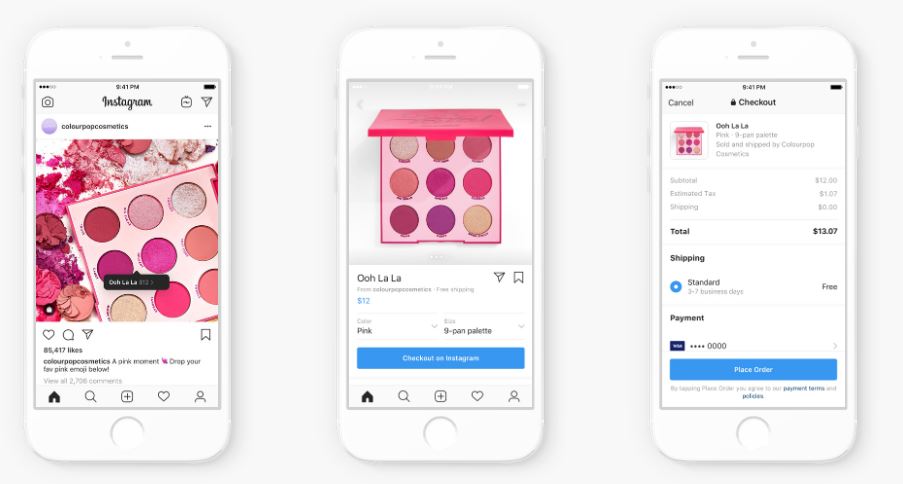







 (800) 915 7990
(800) 915 7990
